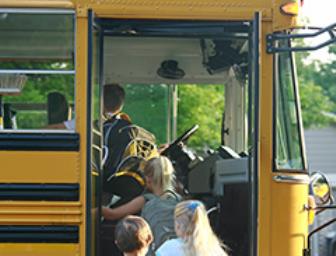Summary
Please enable javascript to play this video.
| Quick Facts: Bus Drivers | |
|---|---|
|
$48,370 per year
$23.26 per hour |
|
| High school diploma or equivalent | |
| None | |
| See How to Become One | |
| 546,100 | |
| 1% (Slower than average) | |
| 7,600 | |
What Bus Drivers Do
Bus drivers transport people between various places.
Work Environment
Part-time work is common for bus drivers. Drivers’ schedules may vary and include early mornings, evenings, or weekends. Many bus drivers work for schools, and they work only when schools are in session. Driving through heavy traffic or bad weather and dealing with unruly passengers can be stressful for bus drivers.
How to Become a Bus Driver
Bus drivers must have a commercial driver's license (CDL), which they sometimes earn during on-the-job training. They also need a good driving record and must meet physical, hearing, and vision requirements. In addition, bus drivers typically need a high school diploma or the equivalent and may be required to pass a background check.
Pay
The median annual wage for bus drivers, school was $47,040 in May 2024.
The median annual wage for bus drivers, transit and intercity was $57,440 in May 2024.
Job Outlook
Overall employment of bus drivers is projected to grow 1 percent from 2024 to 2034, slower than the average for all occupations.
Despite limited employment growth, about 81,800 openings for bus drivers are projected each year, on average, over the decade. Most of those openings are expected to result from the need to replace workers who transfer to different occupations or exit the labor force, such as to retire.
State & Area Data
Explore resources for employment and wages by state and area for bus drivers.
Similar Occupations
Compare the job duties, education, job growth, and pay of bus drivers with similar occupations.
More Information, Including Links to O*NET
Learn more about bus drivers by visiting additional resources, including O*NET, a source on key characteristics of workers and occupations.
 United States Department of Labor
United States Department of Labor






